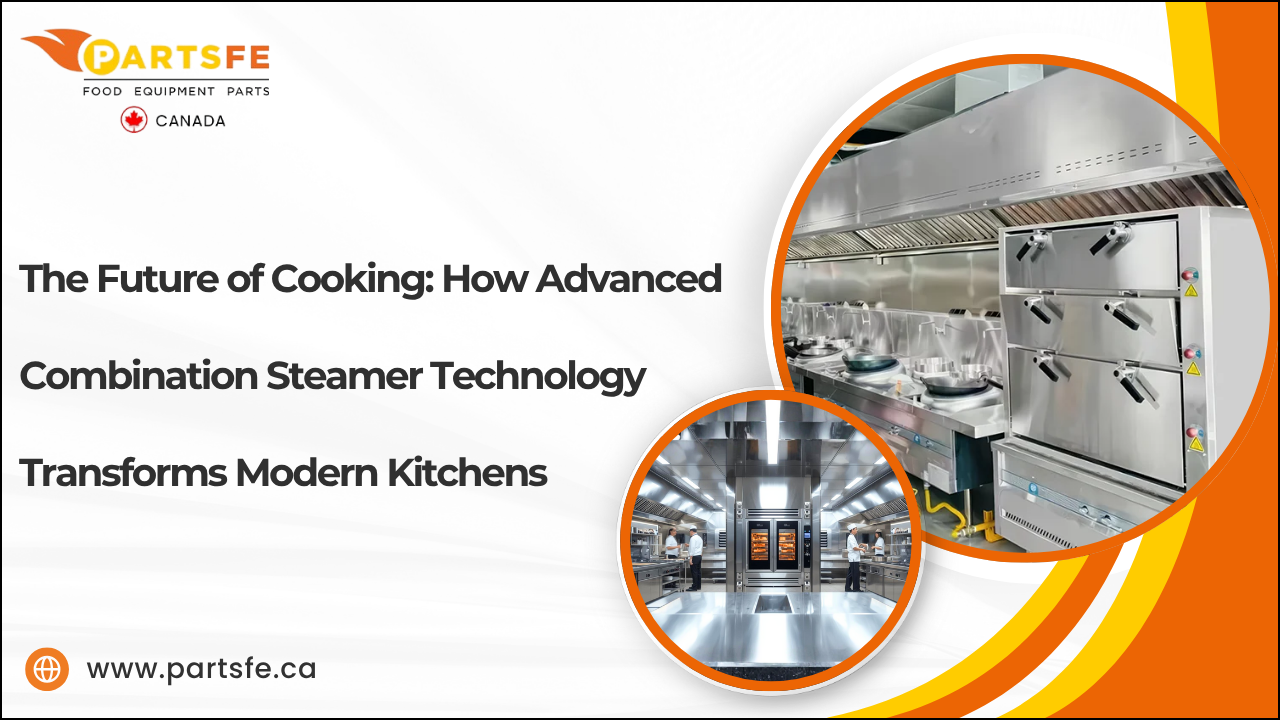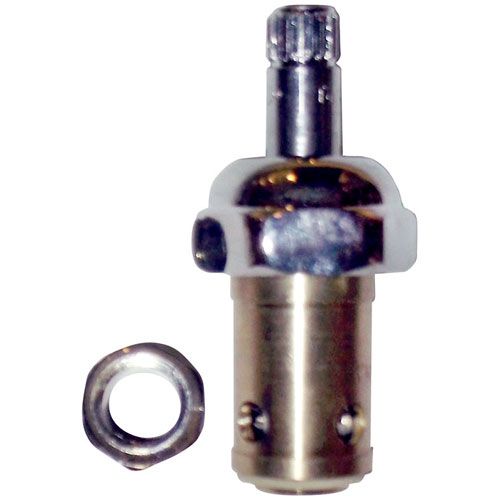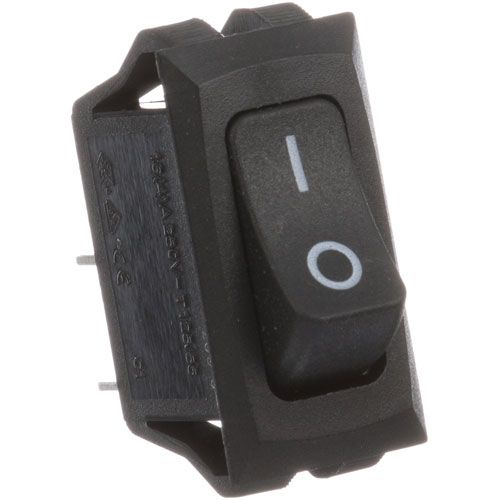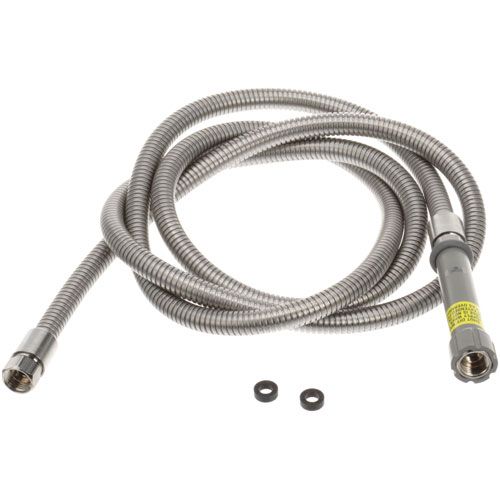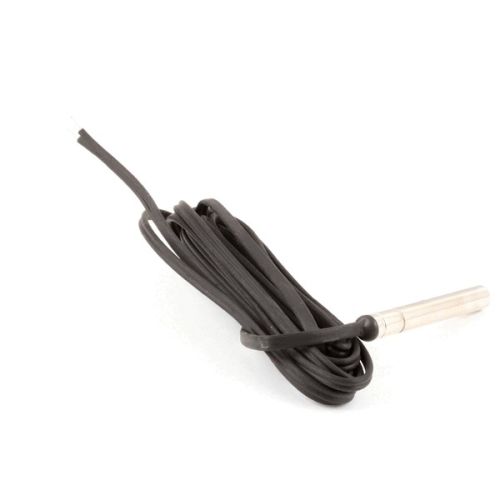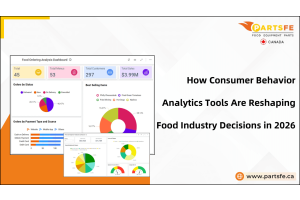The Future of Cooking: How Advanced Combination Steamer Technology Transforms Modern Kitchens
In today’s fast-paced commercial kitchens, efficiency, precision, and consistency are essential. Smart, efficient steamers are revolutionizing professional cooking by enabling chefs to prepare high-quality meals faster while maintaining perfect results. These advanced steamers handle everything from steaming vegetables to reheating and cooking complex dishes, helping kitchens manage high volumes without compromising on flavor or quality.
Beyond speed, smart steam technology boosts productivity, reduces energy consumption, and simplifies kitchen workflows. By integrating these innovative appliances, commercial kitchens can elevate their operations, streamline service, and deliver better dining experiences. Discover how advanced combination steamers are transforming professional kitchens and why investing in this technology is a game-changer for chefs and restaurant owners alike.
Why Every Modern Commercial Kitchen Needs Advanced Steamers
Modern commercial kitchens face constant pressure to serve high-quality dishes quickly, efficiently, and consistently. Advanced steamers address these challenges and have become essential for professional kitchens. Key reasons include:
-
Consistency in Cooking: Advanced steamers provide precise temperature control, ensuring that every dish, from delicate vegetables to proteins, is cooked evenly and perfectly every time.
-
High-Volume Cooking: Multi-level trays and spacious interiors allow kitchens to prepare large quantities of food simultaneously, ideal for busy restaurants and catering services.
-
Time Efficiency: Cooking times are significantly reduced, allowing chefs to serve more dishes without compromising quality.
-
Energy Savings: Steamers are more energy-efficient than conventional ovens or stovetops, helping to lower operational costs.
-
Versatility: They can steam, reheat, and cook a variety of ingredients, making them adaptable for diverse menus and cooking styles.
-
Healthier Cooking: Nutrients, color, and texture are preserved, supporting fresh and wholesome menu options.
-
Improved Workflow: Programmable features and hands-free operation reduce monitoring needs, allowing staff to focus on plating and creativity.
-
Reduced Waste: Precise cooking minimizes overcooked food and spoilage.
-
Enhanced Food Quality: Moisture and flavor are retained, ensuring consistently excellent results.
Advanced steamers streamline operations, improve food quality, and enhance efficiency, making them indispensable in every modern commercial kitchen.
How Smart Steamers Improve Efficiency and Productivity
Smart steamers are transforming commercial kitchens by combining technology, precision, and flexibility. Unlike traditional appliances, they not only cook faster but also optimize workflow in ways that directly impact productivity. Here’s how:
1. Rational iCombi Pro: Intelligent Cooking Programs
The Rational iCombi Pro is revolutionizing commercial kitchens with its ability to intelligently adjust cooking times, temperatures, and steam levels based on the type and load of food. This results in improved cooking efficiency, consistency, and reduced manual labor.
Appliance Model:
-
Rational iCombi Pro Combination Oven
Features:
-
Intelligent cooking programs adjust based on food type and quantity.
-
Adaptive steam distribution ensures even cooking across all trays.
-
Remote monitoring via Wi-Fi or a mobile app for real-time control.
Advantages:
-
Efficiency: Reduces human error and ensures consistent results with minimal oversight.
-
Productivity: Allows kitchen staff to multitask and focus on other tasks, boosting overall kitchen throughput.
Benefits:
-
Ideal for preparing large quantities of diverse dishes simultaneously, such as proteins, vegetables, and grains.
-
Perfect for managing high-volume service without compromising on speed or quality.
2. Alto-Shaam Combitherm: Adaptive Steam Distribution
The Alto-Shaam Combitherm optimizes cooking with its advanced steam circulation technology, enabling even cooking across multiple trays. This results in greater kitchen efficiency and less need for staff oversight.
Appliance Model:
-
Alto-Shaam Combitherm Combi-Oven
Features:
-
Advanced steam circulation ensures uniform cooking across all trays.
-
Adjustable cooking parameters for different food types.
Advantages:
-
Efficiency: Eliminates the need for constant monitoring, preventing uneven cooking and increasing throughput.
-
Productivity: Reduces manual labor and speeds up the cooking process, enhancing overall kitchen output.
Benefits:
-
Ideal for cooking large quantities of meat, seafood, and vegetables simultaneously.
-
Best for fast-paced kitchens like buffets and catering operations.
3. MKN FlexiCombi: Inventory & Portion Management
The MKN FlexiCombi incorporates smart technology to help restaurants track cooking batches and manage ingredient usage. This capability leads to reduced waste, better inventory management, and enhanced portion control, which ultimately boosts kitchen efficiency and productivity.
Appliance Model:
-
MKN FlexiCombi Oven
Features:
-
Tracks cooking batches and alerts when ingredient levels reach capacity.
-
Integrates with kitchen management software for seamless operation.
Advantages:
-
Efficiency: Minimizes food waste by maintaining accurate inventory and managing portions automatically.
-
Productivity: Helps streamline kitchen operations and ensures consistent dish preparation, speeding up service times.
Benefits:
-
Perfect for kitchens with complex menus and specific portion requirements.
-
Helps reduce food waste in both fast-casual and fine-dining restaurants.
4. Vulcan Smart Oven: Remote Monitoring & Alerts
The Vulcan smart oven allows chefs to remotely monitor cooking cycles, enabling them to manage multiple kitchen tasks simultaneously. This increases efficiency by freeing up time for other important tasks and ensuring food quality through real-time alerts.
Appliance Model:
-
Vulcan Smart Oven
Features:
-
Remote control via Wi-Fi or app for monitoring cooking cycles.
-
Alerts notify staff when cooking cycles reach key stages.
Advantages:
-
Efficiency: Enables multitasking by freeing up kitchen staff from monitoring cooking cycles.
-
Productivity: Increases kitchen productivity by reducing manual checks, thus speeding up food prep and service.
Benefits:
-
Ideal for managing cooking cycles remotely during high-volume service or busy meal times.
-
Best for kitchens with multiple prep areas or staff constantly on the move.
5. Lainox Inox: Energy Load Balancing
The Lainox Inox smart steamer helps commercial kitchens optimize energy consumption, providing significant cost savings while maintaining high cooking performance. Its energy-efficient design contributes to sustainable operations without compromising quality or productivity.
Appliance Model:
-
Lainox Inox Smart Steamer
Features:
-
Dynamic energy load balancing based on cooking load.
-
Energy-efficient design to reduce overall electricity usage.
Advantages:
-
Efficiency: Reduces energy consumption, lowering operating costs while maintaining cooking performance.
-
Productivity: Supports high-output kitchens by offering optimal performance even with reduced energy usage.
Benefits:
-
Ideal for commercial kitchens that focus on sustainability while maintaining high output.
Transforming Workflow: The Impact of Advanced Steamer Technology
Advanced steamer technology is revolutionizing kitchen operations by blending intelligence, precision, and adaptability into a single system. Beyond cooking improvements, it redefines how chefs plan, coordinate, and execute their culinary workflow from start to finish.
Here’s how these cutting-edge steamers uniquely transform workflow in modern commercial kitchens:
-
Real-Time Demand Adjustment: Steamers can automatically adjust cooking speed and intensity based on incoming orders, aligning production with service demand.
-
Modular Workflow Integration: Designed to fit modular kitchen systems, steamers can seamlessly switch between prep, cook, and finishing zones to enhance space efficiency.
-
Automated Prep-to-Serve Transition: Syncs with digital order systems, triggering cooking cycles the moment ingredients are prepped, reducing idle time.
-
Precision Reheating Protocols: Smart reheating functions restore cooked dishes without altering texture or flavor, enabling just-in-time plating.
-
Intelligent Queue Balancing: Manages multiple cooking tasks simultaneously and prioritizes dishes nearing service time to prevent delays.
-
Steam-Based Sanitation Mode: Some models feature sterilization functions that sanitize utensils or trays between cooking cycles, ensuring continuous operation without downtime.
-
Workflow Mapping Analytics: Tracks kitchen activity patterns—like load frequency, idle times, and steam usage to help managers redesign workflows for peak efficiency.
-
Cross-Process Synchronization: Integrates with refrigeration, holding, or packaging units for coordinated hot-and-cold workflows.
-
Auto-Calibrated Menu Adjustments: Adjusts steam parameters based on ingredient temperature or storage conditions, maintaining consistency even under variable prep environments.
-
Operational Transparency: Provides visual dashboards of active and upcoming cooking cycles, helping chefs manage timing and station responsibilities effortlessly.
By integrating these innovations, advanced steamers do more than cook—they orchestrate the flow of an entire kitchen. The result is faster coordination, reduced bottlenecks, and a streamlined culinary ecosystem built for precision and performance.
Read this article on restaurant equipment trends to watch for in the foodservice industry to find the latest innovations shaping efficiency, safety, and sustainability.
Best Practices for Using Smart Steamers in Commercial Kitchens
Smart steamers bring precision and speed, but to unlock their full potential, there are strategic use‑cases and operational behaviors that go beyond routine cleaning or standard usage. Here are fresh approaches to integrating them effectively:
-
Vegetable and Grain Preparation: Quickly steam large batches of vegetables, rice, or quinoa for multiple menu items, maintaining color, texture, and nutrients.
-
Protein Cooking: Consistently cook proteins like fish, chicken, or pork without drying out, ensuring even doneness for each portion.
-
Batch Reheating: Reheat pre-cooked items evenly for buffet, banquet, or catering services without compromising quality.
-
Sauce and Stock Heating: Gently heat delicate sauces, soups, and stocks without scorching, thanks to controlled steam temperature.
-
Dough Proofing: Use low-humidity steam cycles for yeast-based products like bread, buns, and pastries to accelerate fermentation.
-
Seafood Preparation: Steam shellfish and crustaceans to precise doneness while preserving natural flavor and texture.
-
Meal Prep for Banquets or Catering: Cook multiple components simultaneously on different trays, reducing total prep time.
-
Vegetarian and Health-Focused Menu Items: Prepare steamed dishes like dumplings, vegetables, and grains for healthier menus.
-
Plate-Ready Finishing: Use just-in-time steaming to keep dishes hot and fresh until service, reducing wait times.
-
Specialty Cooking Techniques: Infuse herbs, aromatics, or sauces during steaming for flavor layering without extra steps.
Check out this article on restaurant technology: predicting the future in the year 2030 to explore upcoming innovations set to revolutionize dining and kitchen operations.
Strategic Considerations for Maximizing Steamer Potential
Advanced combination steamers are transforming commercial kitchens, but unlocking their full potential requires thoughtful integration and attention to workflow, menu planning, and staff practices. Here’s a concise summary of the key takeaways and considerations:
Key Takeaways:
-
Efficiency and Speed: Smart steamers reduce cooking times, handle high-volume batches, and streamline kitchen operations.
-
Consistency and Quality: Precise temperature and humidity control ensure perfectly cooked dishes every time.
-
Versatility: From steaming vegetables and proteins to reheating, proofing dough, or infusing flavors, a single steamer can handle multiple tasks.
-
Energy and Waste Reduction: Advanced load-sensing and energy-saving features lower operational costs and reduce food waste.
-
Enhanced Workflow: Automated cycles, scheduling, and remote monitoring let chefs focus on plating, creativity, and service.
Considerations for Successful Implementation:
-
Staff Training: Equip your team to use recipe guidance, programmable settings, and monitoring features effectively.
-
Menu Planning: Align steaming cycles with your signature dishes to maintain quality and efficiency.
-
Maintenance Routine: Regular cleaning and descaling ensure consistent performance and longevity.
-
Kitchen Layout Integration: Position steamers strategically to optimize prep-to-serve flow.
-
Energy Management: Use smart energy features to balance performance and cost savings.
By keeping these takeaways and considerations in mind, smart steamers become more than appliances; they evolve into strategic partners that enhance productivity, elevate dish quality, and help your kitchen stay competitive in the fast-paced world of modern professional cooking.
Looking to future-proof your kitchen in 2026? PartsFe CA has everything you need to upgrade your cooking game with advanced combination steamer parts from trusted brands like Scotsman, Convotherm, and Alto-Shaam. Whether you're replacing steam generators, control panels, or temperature sensors, PartsFe provides high-quality parts that enhance your kitchen's performance and efficiency.
References:
https://natural-resources.canada.ca/energy-efficiency/energy-star/products/list-certified-products/
https://appliance-standards.org/product/commercial-steam-cookers
https://www.energy.gov/femp/water-efficient-technology-opportunity-connectionless-food-steamer
FAQs
How much does a commercial combination steamer cost for a small kitchen?
Small commercial combination steamers typically cost between $5,000 and $10,000 USD, depending on size, power type, and features. Compact models are ideal for cafés or small restaurants looking for efficiency without large-scale installation costs.
How much ROI can a large-capacity combination steamer generate in a busy commercial kitchen?
A large-capacity combination steamer can yield ROI within 12–24 months by reducing cooking time, labor, and energy use. Its efficiency and ability to replace multiple appliances make it a cost-effective investment for high-volume commercial kitchens.
How do energy savings from a combination steamer compare to traditional ovens and steamers over time?
Combination steamers can reduce energy use by 20–30% compared to traditional ovens, thanks to faster cooking and better heat retention. Over time, these savings offset higher upfront costs and lower utility expenses.

